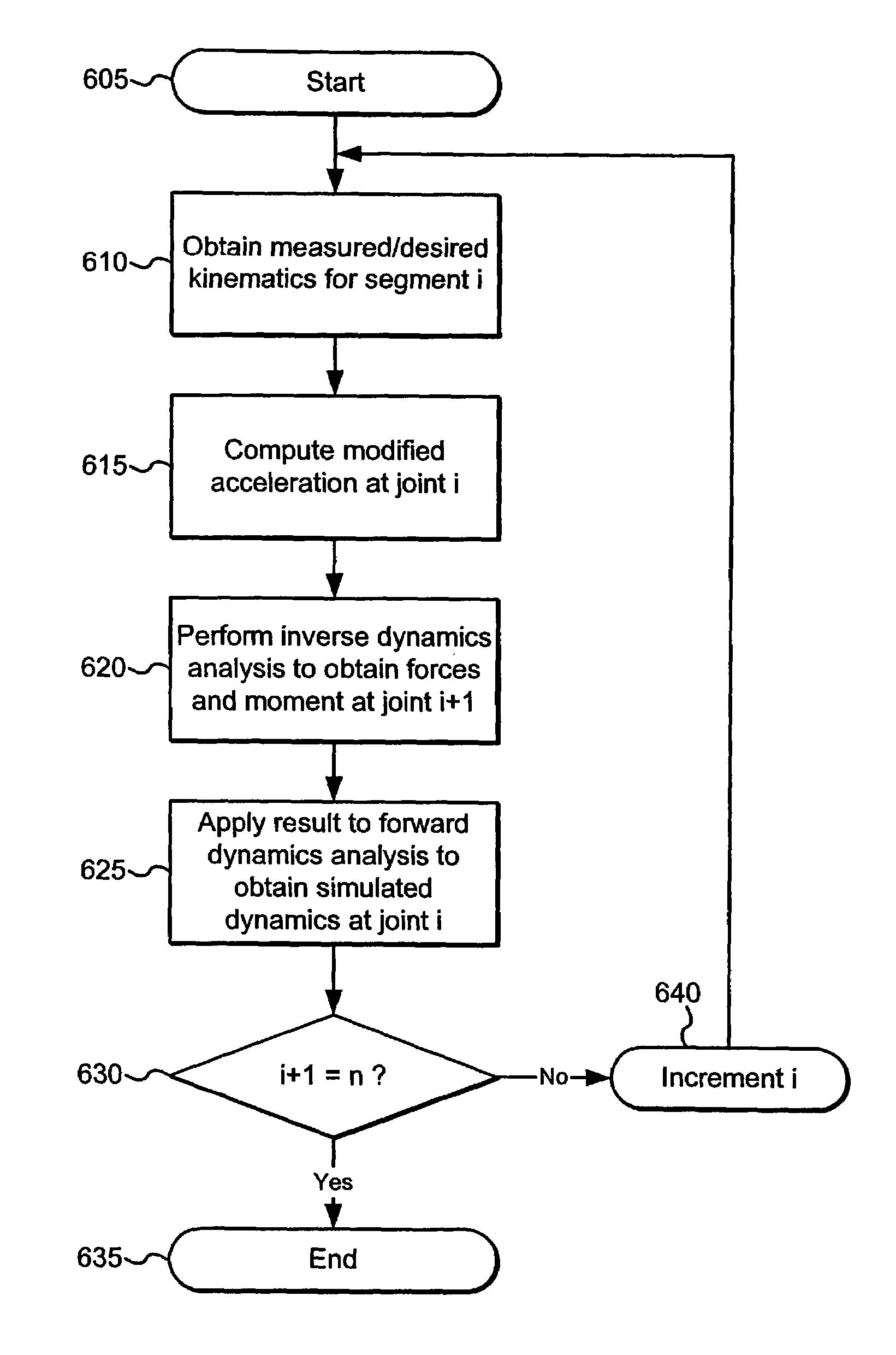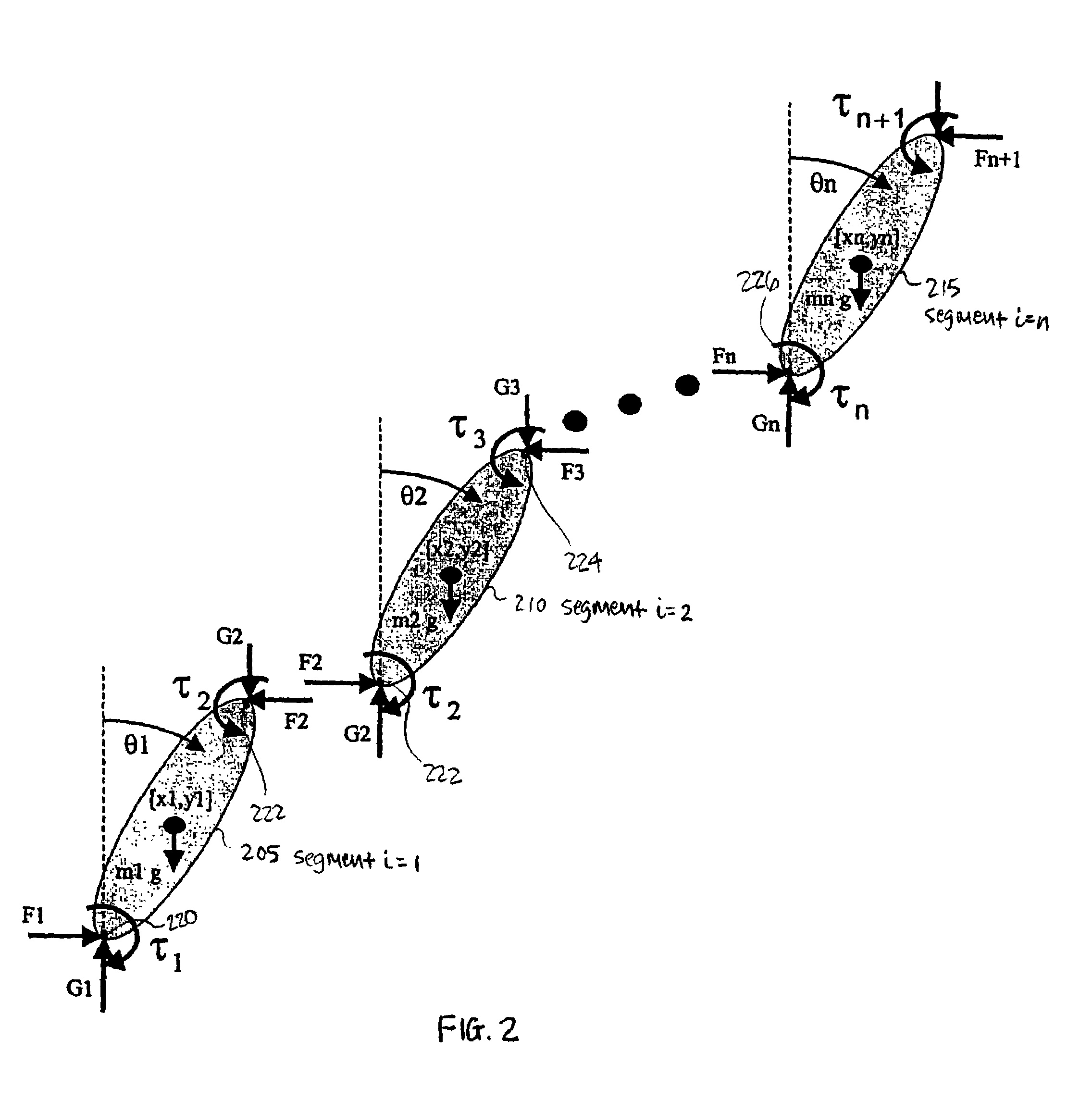Feedback estimation of joint forces and joint moments
a joint force and moment technology, applied in the field of human motion analysis, can solve the problems of imperfect experimental observations, noise pollution, and error caused by calculating higher-order derivatives, and achieve the effect of improving joint load estimation accuracy and reducing source of errors
- Summary
- Abstract
- Description
- Claims
- Application Information
AI Technical Summary
Benefits of technology
Problems solved by technology
Method used
Image
Examples
Embodiment Construction
[0041]Preferred embodiments of the present invention are now described with reference to the accompanying figures where like reference numbers indicate identical or functionally similar elements. Also in the figures, the left most digit of each reference number corresponds to the figure in which the reference number is first used.
[0042]FIG. 1 is an illustration showing how recursive calculation is used to separate lower body dynamics from upper body dynamics. The illustration includes upper body portion 105 and lower body portion 110. A segment of upper body portion 105 is illustrated with load 140. Lower body portion 110 includes segments having ankle joint 120, knee joint 125, and hip joint 130. In a recursive method for computing joint forces and moments, the upper body portion 105 can be modeled separately from the lower body portion 110. Starting with ground reaction forces 115, one can effectively isolate joints 120, 125, and 130 of lower body portion 110 as well as the associ...
PUM
 Login to View More
Login to View More Abstract
Description
Claims
Application Information
 Login to View More
Login to View More - R&D
- Intellectual Property
- Life Sciences
- Materials
- Tech Scout
- Unparalleled Data Quality
- Higher Quality Content
- 60% Fewer Hallucinations
Browse by: Latest US Patents, China's latest patents, Technical Efficacy Thesaurus, Application Domain, Technology Topic, Popular Technical Reports.
© 2025 PatSnap. All rights reserved.Legal|Privacy policy|Modern Slavery Act Transparency Statement|Sitemap|About US| Contact US: help@patsnap.com



